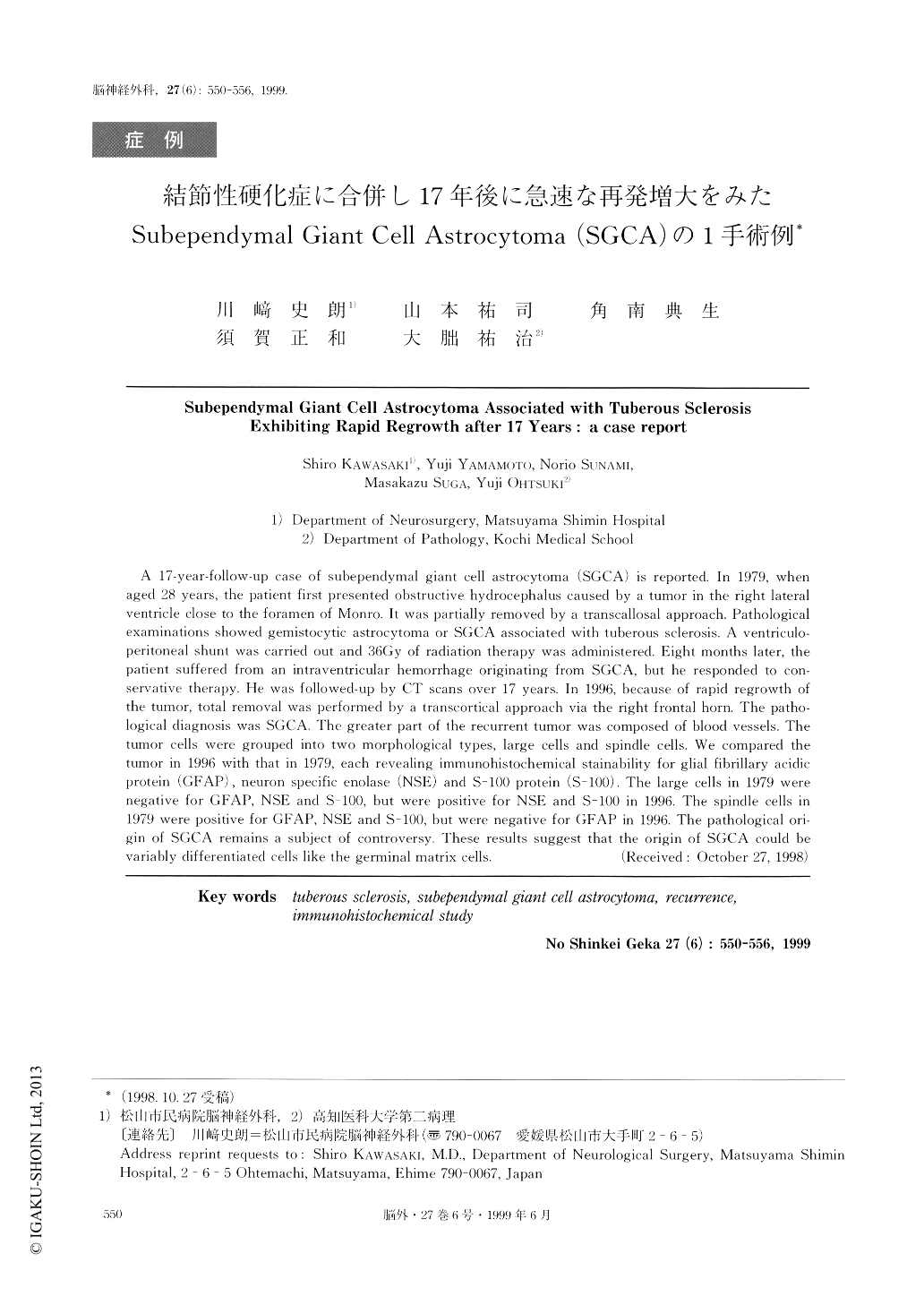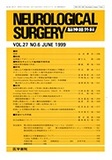Japanese
English
- 有料閲覧
- Abstract 文献概要
- 1ページ目 Look Inside
I.はじめに
結節性硬化症の3.7-17%に脳腫瘍が合併し,そのほとんどがsubependymal giant cell astrocy-toma(SGCA)である2).その発症経過の特徴および細胞起源については議論の多いところであるが,germinal matrix cellと同様な多分化能をもつ細胞の増殖が推測されている6,9,11,14,15).今回われわれは部分摘出術を行い経過観察していたところ17年後に急速な再発増大を認め,全摘出術を行った46歳男性のSGCAを経験した.そこで初回と今回の摘出標本を免疫組織学的に対比検討したところ腫瘍細胞の染色性に異同を認めた.自験例は成人発症のSGCAで本腫瘍の発症経過や細胞起源について考察するのに貴重な症例と思われたので報告する.
A 17-year-follow-up case of subependymal giant cell astrocytoma (SGCA) is reported. In 1979, whenaged 28 years, the patient first presented obstructive hydrocephalus caused by a tumor in the right lateralventricle close to the foramen of Monro. It was partially removed by a transcallosal approach. Pathologicalexaminations showed gemistocytic astrocytoma or SGCA associated with tuberous sclerosis. A ventriculo-peritoneal shunt was carried out and 36Gy of radiation therapy was administered. Eight months later, thepatient suffered from an intraventricular hemorrhage originating from SGCA, but he responded to con-servative therapy. He was followed-up by (7T scans over 17 years. In 1996, because of rapid regrowth ofthe tumor, total removal was performed by a transcortical approach via the right frontal horn. The patho-logical diagnosis was SGCA. The greater part of the recurrent tumor was composed of blood vessels. Thetumor cells were grouped into two morphological types, large cells and spindle cells. We compared thetumor in 1996 with that in 1979, each revealing immunohistochemical stainability for glial fibrillary acidicprotein (GFAP), neuron specific enolase (NSE) and S-100 protein (S-100). The large cells in 1979 werenegative for GFAP, NSE and S-100, but were positive for NSE and S-100 in 1996. The spindle cells in1979 were positive for GFAP, NSE and S-100, but were negative for GFAP in 1996. The pathological ori-gin of SGCA remains a subject of controversy. These results suggest that the origin of SGCA could bevariably differentiated cells like the germinal matrix cells.

Copyright © 1999, Igaku-Shoin Ltd. All rights reserved.


